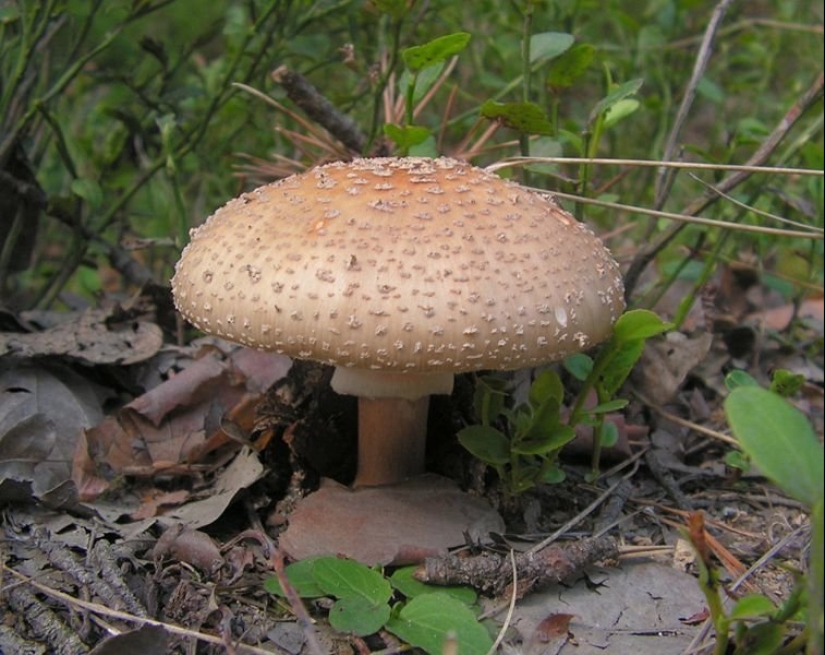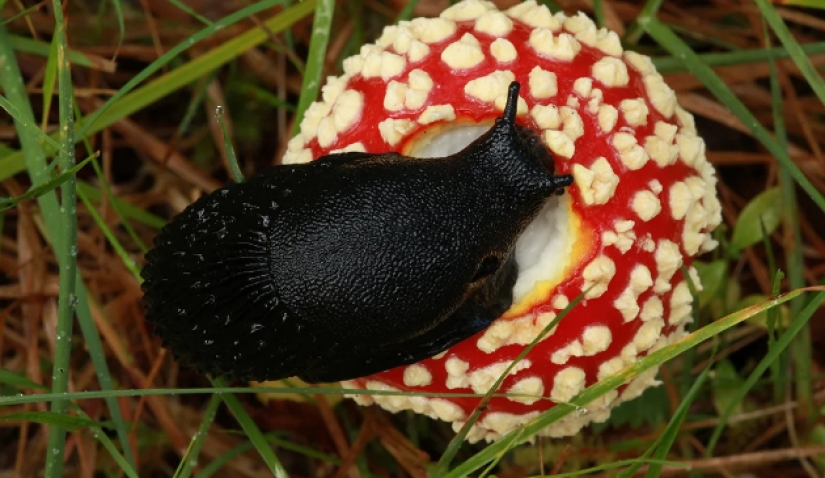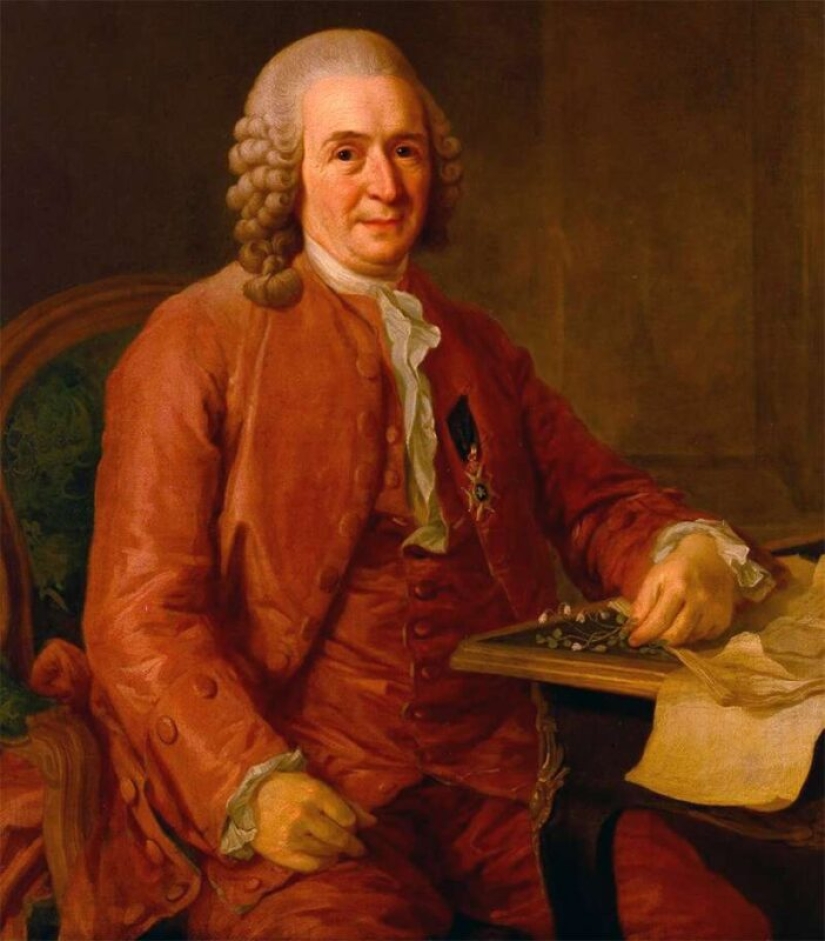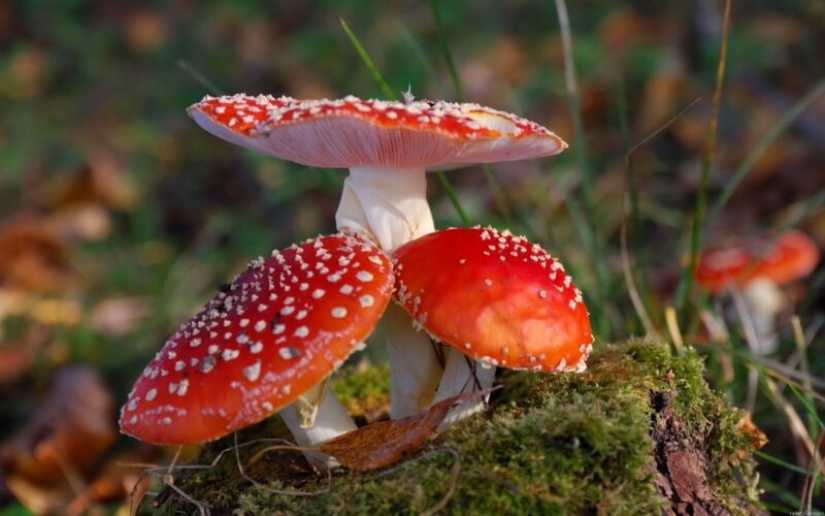How did the fly agaric get its name and does it actually kill flies?
Categories: Nature
By Pictolic https://pictolic.com/article/how-did-the-fly-agaric-get-its-name-and-does-it-actually-kill-flies.htmlEven if you absolutely do not understand mushrooms, you will definitely not confuse the fly agaric with others. This bright inhabitant of the forest has a bad reputation and the corresponding name in both Russian and Latin is Amanita muscaria (mushroom fly agaric). But where did such an unusual name come from and does the fly agaric really kill flies? This question was answered by mycologists Valentina Pavlovna Wasson and Robert Gordon Wasson in their book "Mushrooms, Russia and History".

Many of us have been convinced since childhood that fly agaric kills insects that try to eat it. In some European countries, these mushrooms are still used as a free insecticide and people are confident in their effectiveness. Information about the properties of fly agarics is passed down among the people from generation to generation and no one questions it.

Forest animals eat fly agarics without harm to themselves
It is not known when this myth was born. Ancient authors often wrote about mushrooms, but they never mentioned killing flies. We can say for sure that in modern Italy and Greece, the rural population has not heard anything about the insecticidal properties of this poisonous fungus. The Basques and the entire population of the Iberian Peninsula do not know about it either.
At the same time, biologist Eugene Rolland, in his work "Popular flora", noted that in France the name "tue-mouche" ("killer of flies") often used by the villagers of Alsace and the Department of Aude, bordering Germany. With their light hand, the name "fly agaric" got into most mushroom reference books in France, while only educated people use it.
Rolland writes that in the commune of Le Val-d'ajol in the Vosges, in some peasant houses, red fly agarics are hung from the ceiling because they believe that they are able to"suck the life out of flies". But this phenomenon is regional and has nothing to do with the entire population of France.

This is also a fly agaric, but of a different kind. It is called "gray-pink fly agaric"
The Germans have derivatives of the term Fliegenschwamm, or "fly mushroom" in the dialects of all regions. There is a "fly agaric" in Dutch and in all the Germanic languages of Scandinavia. In English, by the way, the name of the mushroom is not associated with flies, and the well-known English-language names of fly agaric and fly amanita appeared relatively recently, in the last two centuries. The Slavs have the names "fly agaric" and various forms of "killer of flies" are present in almost all languages.
The Wassons draw attention to the fact that the connection between the red mushroom and flies is present only in the languages of the Germanic and Slavic peoples of Northern Europe. The word "fly agaric" in one form or another can be found in sources that are more than 600 years old. For the first time, the medieval scientist Albert the Great wrote about fly agaric in the 13th century. In his large-scale work "De Vegetabilibus" ("About plants"), the fungus is mentioned twice and both times as poisonous to flies. Here is one of the excerpts:

Slug fly agaric is clearly to your taste
A hundred years later, another German scientist, Konrad von Megenberg, the author of the" Book of Nature "("Das Buch der Natur"), almost literally repeats the recipe of Albert the Great using milk. The author uses the name "fly mushroom", which by the 14th century was used everywhere in Germany. There are other, more recent authors who claim that the mushroom is poisonous for flies, but they are all exclusively Germans.
At the same time, it is interesting that von Megenberg generally vaguely imagines the appearance of a fly agaric and in his book he constantly confuses it with a pepper pear (Lactarius piperatus) – a conditionally edible mushroom. As for Albert the Great, the description of "bubbles like bubbles on the skin of patients with leprosy" is obviously invented by him or refers to some other mushroom.
It follows from this that German pundits should not be particularly trusted, since they are clearly fantasizing. But, apart from them, no one talks about mushrooms that are poisonous to flies – neither the French, nor the Italians, nor the British. But the great Swedish biologist Carl Linnaeus wrote about the use of fly agarics for fly baiting in the province of Småland, in Sweden. The scientist also tells in one of his books about the preparation of a paste from fly agarics, which is smeared on cracks in houses to get rid of bedbugs.

Carl Linnaeus knew a lot about mushrooms, but we will not take his word for it
The French mycologist Jean Baptiste Bulyar, the author of the scientific work "History of poisonous and suspicious plants of France", published in 1799, decided to put an end to this issue. Having traveled all over France and part of Spain, the biologist did not find anywhere people who use fly agaric as an insecticide. To test the German authors, he decided to conduct an experiment that disappointed him.
Unfortunately, we do not know whether the scientist conducted a clarifying experiment or not. It is possible that Bulyar had more important things to do than hang fly agarics and watch for flies. Only one thing is known for sure, that in 1793, shortly before his death, the Frenchman wrote in his diary that the name Amanita muscaria, that is, the mushroom fly agaric, should be replaced with a more neutral one, for example, by Agaricus pseudoaurantiacus.

It turns out that humanity, having a huge knowledge base on any topic, has not yet been able to deal with one of the most common poisonous mushrooms of the middle band. There is no one to find out whether he kills flies or not yet. But we know for sure that the word "fly agaric" was invented by the Germans, although it is not a fact that they knew exactly what they were writing about.
And also, if they tell you that fly agaric is the most beautiful mushroom, don't believe it either. There are more attractive and even absolutely fantastic mushrooms in nature, which our "fly killers" are very far from.
Keywords: Nature | Insects | The middle ages | Experiment | Scientists | Germans | Mushrooms | Flies
Post News ArticleRecent articles

In the summer, some of our compatriots prefer to fly away from their hometowns. Even those who are afraid to fly. If you are one of ...

The name “Shaolin” is well-known even among those who have little interest in oriental martial arts. However, we know quite ...
Related articles

Many writers, including Nikolai Gogol in his immortal «Taras Bulba» mentioned that Sich women were not allowed. There is ...

Deformities and physical abnormalities simultaneously frightened and attracted people at all times. The so-called "circus freaks" ...

The world community was shocked when in 2007 a dirty naked woman was found in the Cambodian jungle, who did not speak, could not ...

Everything is good in moderation — agree, a wise statement and actually a good rule to live by. Especially with regard to ...